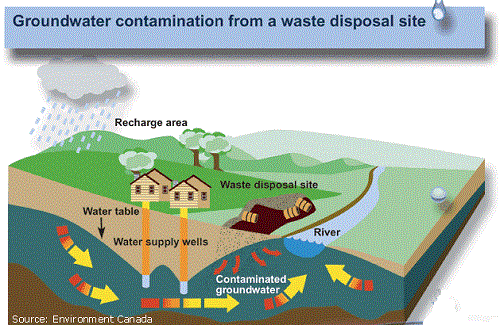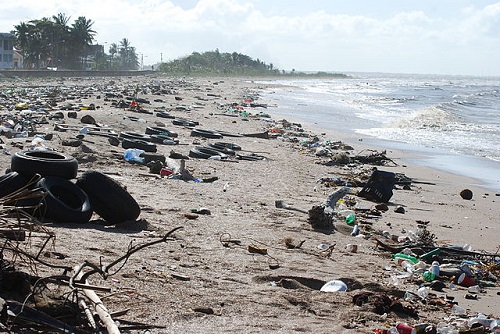Difference Between Contamination and Pollution
Most people use the terms contamination and pollution interchangeably as they both deal with unwanted elements.
The substances that cause pollution are termed as “pollutants” while those that lead to contamination are called “contaminants”. For instance, a waste material in a river may be called as a contaminant or a pollutant.
Another similarity is the remediation process. The clean-up steps for pollution are identical with that of contamination. Moreover, they are linked in a way that the introduction of harmful contaminants leads to pollution.
However, pollution is regarded with more negativity due to its more perilous impacts as compared to contamination. Indeed, these occurrences are interconnected and comparable; yet, they still have notable differences.
What is Contamination?
Contamination happens when an external material gets mixed with the original matter or area. For example, the mixture of ink with drinking water may already be termed as contamination. Contaminants may be chemical, biological, or radiological in nature.
Hence, they may be harmful or not. The following are various fields which are commonly particular regarding contamination:
-
Chemistry
The intrusion of an impure chemical, which results to a chemical reaction, causes the contamination. Regarding food chemistry, contamination occurs with the presence of pathogens (disease-producing agent).
-
Radiology
Radiation contamination occurs when there is an undesirable level of radioactive particles in a certain area including the human body. For instance, some locations are highly restricted due to the residual radioactive materials from nuclear plants.
-
Forensic Science
Contamination happens when the evidences in an investigation or crime scene gets tampered with unwanted substances such as hair strands, DNA, and finger prints.
-
Linguistics
Forming blends and replacing linguistic forms are termed as contamination. For example, the earlier word which is “femelle” was altered by “male”. Hence, the word “female”.
What is Pollution?
Pollution is particularly dealing with waste materials which harm our air, water, soil, and space. It occurs when the contaminants reach an alarming number. The following are the forms of pollution:
-
Air
Harmful compounds such as chlorofluorocarbons (CFCs), carbon monoxide, and sulfur dioxide get mixed with the atmosphere which lead to deleterious effects such as the depletion of ozone layer and respiratory problems.
-
Water
Discharge or spillage of waste into different bodies of water cause the destruction of marine life.
-
Land
Pesticides, heavy metals, plastics, and other substances get mixed with soil and generally lessens its fertility.
-
Light
With the rise of industrialization comes the utility of extremely bright lights that results to astronomical interference and over-illumination.
-
Noise
Being consistently exposed to harmful noise from aircraft, trains, sonars, and other basically industry-related activities may result to auditory problems as well as psychological issues like depression.
The following are the two basic kinds of pollutants:
- Biodegradable: These materials only last for a short time. Hence, they cause less damage to the environment. Biodegradable pollutants include waste from sewage, vegetables/plants, poultry, and the like.
- Non-biodegradable: These cause major problems since they can survive for long periods of time. Examples of these are pesticides, glass, mercury, and plastics.
Differences between Contamination and Pollution
-
Degree of Damage in Contamination vs Pollution
The degree of damage is typically higher among pollution cases as compared to contamination since pollutants often disturb ecosystems. On the other hand, contaminants do not usually inhibit life cycles. For instance, water pollution due to mercury kills marine life while water contamination due to a fecal matter does not pose much danger.
-
Environment in Contamination vs Pollution
Pollution is mostly associated with the environment whereas contamination may occur in a certain body or substance. Water, air, and land pollution degrade the quality of flora and fauna while contamination may merely occur in a particular petri dish or similarly confined surface area.
-
Source of Contamination and Pollution
Pollution is caused by man whereas contamination may be brought about by man or contaminants may be inherently present in the environment. For instance, pollutants are commonly present in the byproducts of manufacturing industries while contaminants are already in the soil, water, and animal wastes.
-
Form
Pollution can be due to chemical substances or energy such as light and sound. As for contamination, it is generally confined to substances.
-
Regulation of Monitoring
Due to its graver impact, pollution is more associated with monitoring regulations as compared to contamination. For example, the Clean Air Act has been adapted in a number of countries to prevent and reduce smog and other forms of atmospheric pollution.
-
Foreign Body in Contamination and Pollution
As compared to pollution, contamination is more often linked with the presence of foreign matter since a pollutant may actually be a part of the original material which has reached a harmful level. To illustrate, carbon dioxide (CO2) is naturally occurring in the atmosphere. However, pollution would occur if the CO2 level would abnormally increase in a certain area.
-
Infectious Diseases
The term contamination is more likely associated with infectious disease than pollution. For instance, unhealthy blood samples, cell lines, and genes may be medically termed as “contaminated” with certain virus or bacteria.
Contamination vs Pollution : Comparison chart
| Contamination | Pollution |
| Does not always cause harm | Often leads to damage |
| Less associated with environmental issues | Commonly linked with environmental issues |
| May not be caused by humans | Usually caused by humans |
| Generally takes the form of substances or organisms | Includes substances and energy |
| Less governed by monitoring regulations | Mostly governed by monitoring regulations |
| More linked with the intrusion of a foreign substance | May be due to an already existing substance with an abnormal level or number |
| Involved with the transfer of diseases | Less involved with the biological transfer of diseases |
Summary of Contamination vs Pollution
- Both contamination and pollution involve unwelcome elements.
- Pollution commonly leads to more detrimental environmental effects as compared to contamination.
- Pollution is mostly caused by humans. On the other hand, contamination may be due to natural occurrences.
- Monitoring regulations are more linked with pollution than contamination.
- The act of an intruding foreign body is more associated with the process of contamination than pollution.
- Contamination is often used as term regarding infectious diseases while pollution is more on environmental concerns.
- All pollutants are contaminants. However, not all contaminants are actually pollutants.
- Difference Between Hematoma and Melanoma - February 9, 2023
- Difference Between Bruising and Necrosis - February 8, 2023
- Difference Between Brain Hematoma and Brain Hemorrhage - February 8, 2023
Search DifferenceBetween.net :
2 Comments
Leave a Response
References :
[0]Hill, Marquita. Understanding Environmental Pollution. Cambridge: Cambridge University Press, 2010. Print.
[1]Ross, Benjamin and Amter, Steven. The Polluters. Oxford: Oxford University Press, 2010. Print.
[2]Van der Perk, Marcel. Soil and Water Contamination. Florida: CRC Press, 2013. Print.
[3]"Image Credit: http://esquad.wikispaces.com/Ground+Water+Quality"
[4]"Image Credit: https://en.wikipedia.org/wiki/Pollution"



Good meaningful
I enjoyed it very much